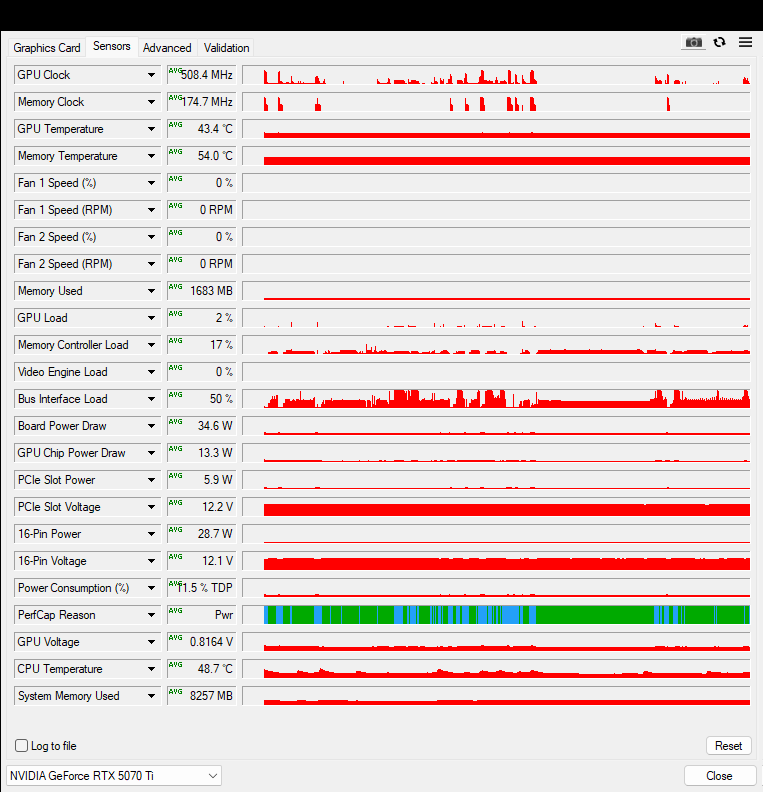Recently, I got a new Asus Prime 5070 Ti, but unfortunately it suffers from a problem. Even when only hooked up to a single 1440p 180hz monitor, it idles at 35-40 watts. That's without anything happening, just desktop. Even with the monitor off, it doesn't drop under 30. Fans are off (0 RPM) and no RGB is enabled.
Most reviewers show that 15-20W is the expected idle power for this GPU, and even the most power hungry 70Tis shouldn't go over ~28.
Things I've tried so far:
- Restarting the computer numerous times
- DDU from safe mode x2
- Removing drivers with Revo uninstaller
- Installing latest GameReady drivers (clean installation)
- Switching to latest Studio drivers (clean installation)
- Rolling back to first drivers that support blackwell cards (clean installation)
- Changing Windows power blan to blanaced or power saver
- Changing the power setting to "normal" from nVidia control panel (optimal power is not available)
- Switching between performance and quiet VBIOS
- Undervolting and power limiting with Afterburner and GPU Tweak
- Switting the displayport output
- Switching between 2 and 3 8-pin connectors for the 12-pin adapter
- Updating motherboard BIOS
- Lowering refresh rate on the monitor
- Windows SFC scan
In case you're wondering, my power supply is a 760 watt platinum PSU. With my previous card (GTX 1080), I had about 13-15W of idle power on the same power supply.
Anyone got any ideas on things I could try? Thanks! Also, any other 5070 Ti (or 5070/5080) owners who wish to share their idle power consumption would be more than welcome!
Most reviewers show that 15-20W is the expected idle power for this GPU, and even the most power hungry 70Tis shouldn't go over ~28.
Things I've tried so far:
- Restarting the computer numerous times
- DDU from safe mode x2
- Removing drivers with Revo uninstaller
- Installing latest GameReady drivers (clean installation)
- Switching to latest Studio drivers (clean installation)
- Rolling back to first drivers that support blackwell cards (clean installation)
- Changing Windows power blan to blanaced or power saver
- Changing the power setting to "normal" from nVidia control panel (optimal power is not available)
- Switching between performance and quiet VBIOS
- Undervolting and power limiting with Afterburner and GPU Tweak
- Switting the displayport output
- Switching between 2 and 3 8-pin connectors for the 12-pin adapter
- Updating motherboard BIOS
- Lowering refresh rate on the monitor
- Windows SFC scan
In case you're wondering, my power supply is a 760 watt platinum PSU. With my previous card (GTX 1080), I had about 13-15W of idle power on the same power supply.
Anyone got any ideas on things I could try? Thanks! Also, any other 5070 Ti (or 5070/5080) owners who wish to share their idle power consumption would be more than welcome!




